Are waste solar panels hazardous waste under U.S. law? Or are they a bonanza for modern-day Goldrush, just like the days of 1849?
To me, this presents a question of fact and of law. I’ve been practicing solid and hazardous waste law for nearly 30 years. Even though you’re not my client and this is not legal advice, the analysis was worth my while and I think it may be worth yours to follow along, because the answer to what may appear to be a simple question has resulted in some of the most ridiculous legal fictions I’ve seen in a while.
Resource Conservation & Recovery Act (RCRA)
I apologize for the acronyms. They come with the territory. The analysis starts with RCRA (Rick-Ra), the federal law that occupies the field in the US and that serves as a model program for many other nations. RCRA has two primary programs: Subtitle C addresses hazardous wastes and Subtitle D covers everything else, ordinary solid waste. Arnold & Porter published good powerpoint walking through the basics of RCRA. If you’re interested, you can read it here.
RCRA Subtitle C—Hazardous Waste
RCRA Subtitle C tells us what is and is not hazardous waste. If a solid waste is not hazardous, it can be disposed of for a lot less money in a sanitary solid waste landfill that’s regulated under Subtitle D. The regulatory and engineering controls for hazardous waste are more expensive and protective for workers, the public, and the environment because the waste is, like the title says, hazardous.
In the regulatory program, the waste generator is the responsible party and must characterize the waste before disposal. RCRA allows EPA to list specific wastes as hazardous per se. And there are hundreds of losted hazardous wastes. Used PV solar panels are not listed hazardous waste.
But there is another mandatory step. Any solid waste that exhibits any one of four characteristics is a hazardous waste even if it’s not listed. The characteristic waste standards are Reactivity, Ignitability, Toxicity, and Corrosivity.
Imagine yourself the manager of a municipal solid waste landfill. You would not want these kinds of waste in your landfill. A primary reason for the hazardous waste law is to protect the ordinary solid waste landfill from bad things and costs—like landfill fires, corrosivity, worker exposures, etc. Compliance with then hazardous waste program is expensive, so people want to avoid it.
There need to be special controls around disposal of characteristic wastes. For instance, most characteristic wastes need to be treated prior to disposal so they’re safer to landfill. Plus, a hazardous waste landfill has more stringent, and more costly, engineering controls, such as a double liner system above and below the waste.
Some Solar Panels Leach RCRA Metals—Hazardous Waste
Some solar panels leach heavy metals and are therefore characteristic toxic hazardous waste. To test toxicity, EPA has a standard and conservative leach procedure test that uses an acidic solution: TCLP. Leachate is tested. If a metal exceeds the concentration, the waste is hazardous. TCLP testing is industry standard. I’ve been dealing with TCLP for decades. Everybody in the waste industry is very familiar with TCLP. By the way, most people call it Tee-Clip.
Off Ramp 1: Recycling
Judge Kenneth Starr (whon I met a few times when he visited my law school) rather famously stated in a published opinion that RCRA is “mind-numbing.” The case, American Mining Congress v. EPA, 824 F.2d 1177 (7th Cir. 1987) involved a topic that has plauged waste regulation since the beginning of the program: What is “discarded” material—which is regulated as waste—and what is “recycled” into a new product?
The starting point in the analysis is that unless a material is discarded, it’s not waste at all. The material may be used, it may even be unfit for its first purpose, but if it’s not thrown away, it’s not waste at all.
Lead-acid batteries are a good example of legitimate recycling. If thrown away, they would have to be managed as hazardous waste, but they are 99% recycled into new lead-acid batteries. Only the acid and some of the plastic are thrown away. They are not “discarded.” If you buy a new one, the seller will charge you a core charge that roughly equates to the actual scrap value. Used batteries are a valuable commodity.
Offramp No. 1A - “Sham” Recycling
Sham recycling occurs where a waste generator engages in pretextual “recycling” to avoid hazardous waste management and disposal laws and associated costs. Champions of Environmental Health & Justice in particular has reported on sham disposal of electronic waste worldwide as part of ite E-Trash Transparency Project. The group has installed hundreds of GPS tracking devices on e-waste articles and has tracked them throughout the world.
According to EPA, “sham recycling may include situations when a secondary material is ineffective or only marginally effective for the claimed use; used in excess of the amount necessary; or handled in a manner inconsistent with its use as a raw material or commercial product substitute.” Sham recycling plagues the hazardous waste program nationwide. It’s a loophole that allows generators to circumvent proper and safe disposal of toxic and hazardous waste by creating toxic products. EPA’s Page on Sham Recycling. I shall cover Sham Recycling in more detail in Part 2.
Offramp No. 2 - Universal Waste Offramp from Hazardous Waste Regulations
Recognizing that hazardous waste regulations may be overly burdensom in some instances, EPA has created an important “off ramp” for hazardous waste to still be managed as ordinary solid waste. It is the EPA Universal Waste rule.
The universal waste rule allows for disposal of certain hazardous wastes in a municipal landfill such as: Batteries, Pesticides, Mercury-Containing Equipment, Lamps, Aerosol Cans, flourescent light ballasts, and even X-Ray tubes. But the universal waste rule is meant to be limited and targeted.
But EPA does not include waste solar cells as a universal waste.
Instead, EPA requires that solar panel generators perform TCLP tests prior to disposal because “solar panel waste that fails TCLP must be managed as hazardous waste.” Solar panels don’t have enough metal value to be treated like used circuit boards. Yes, some solar panels are hazardous waste because they are toxic. They leach metals above EPA’s thresholds.
California’s New Goldrush!
Among other things, California is known for being the home of Proposition 65, where the State of California has determined that every consumer product that has any metal causes cancer, birth defects, and other reproductive harm. That’s why we see these labels on all our products. Even Disneyland reminds of these hazards. California is apparently worried about protecting people from metal exposures (except when they’re not).
According to the rationale of California regulators, hazardous waste laws make it “expensive and burdensome to store, handle and transport end-of-life panels for recycling or disposal under current regulations.” Let’s just overlook the fact that some panels are, as a matter of both fact and law, toxic.
According to California regulators’ problem statement:
Solar panels "often contain heavy metals such as cadmium, copper, lead, selenium, and silver. The presence of those metals may cause discarded panels to exhibit the hazardous waste characteristic of toxicity, and thus be classified as hazardous waste."
Oh the horrors—avert the gaze
The facts and law just wrecked the Circular economy narrative. But no worries, RCRA has already created an efficient solution for this problem: Test the waste. Segregate the toxic panels and follow the regulations so the toxic hazardous waste is managed, stored, transported, treated, and disposed of in accordance with the program. It protects the public, workers, groundwater, and other ecoligical receptors.
The Golden State Loves Sham Recycling
California leads the nation in PV solar installations—over 1.5 million; over 37,000 MW of installed capacity; over $80 Billion invested. And with over 75,000 solar power industry workers, 338 Manufacturers, 897 Installers/Developers, and 742 other solar industry companies, the market moving.
But panels don’t last all that long. Following the law and waste management program to protect people and the environment is a massive liability. Hard to imagine that hazardous waste management costs money.
California: under federal RCRA and California’s even more stringent Hazardous Waste Control Law, that’s intended to protect people from exposure to toxic waste: “This classification [of solar panels as hazardous waste] makes it expensive and burdensome to store, handle and transport end-of-life panels for recycling or disposal under current regulations.”
There goes the Circular Economy narrative, right down the hazardous waste toilet.
And Now For the Rest of the Story—Magic Laws!
California became the first and only state in the nation to grant blanket universal waste status for all solar panels, regardless of how much leachable, toxic metals they may have. In California, no solar panel can ever be hazardous waste. No testing. No warnings. Source.
This is so electronic waste recycling workers in California can tear apart old solar panels without any worries about exposures. Not because it's safe. But because health and safety precautions are such a nuisance. Erin Brockovich must be proud. The California legislature is the new PG&E, except nobody will be able to sue the legislature for toxic exposures. Smart!
E-waste workers are exposed to a variety of toxins and poisons, except, apparently, in California. Toxic metals in solar panels do not exist in California because nobody has to look for toxins as they tear them apart, shred, crush, and process them. Testing is such a nuisance.
In the environmental management world, the best advice is:
Imagine yourself a waste solar panel generator. If you run and fail TCLP test like EPA says, you'll immediately become a hazardous waste generator. Here is some professional advice—ask the expert on TCLP. What should I do with my broken solar panels? What does the expert say?
Don't test the panels. "Recycle" them instead. So long as it's not "sham recycling," you avoid all liability.
In California, you don't even have to run TCLP—there's no way to lose. Cross the state line and all the nasty metals D-I-S-A-P-P-E-A-R. Cali loves busted panels. Welcome to the Golden State! No lousy Prop 65 Warning required. Because the Cali Legislature has determined that nothing in waste solar panels could possibly cause cancer or other harms.
The Legal Question
Are broken PV panels hazardous waste? Answer: It depends on the jurisdiction. Not because the waste is different but because the laws are.
In California, the answer is a simple no. No tests. No records. No warnings. No restrictions. Build playgrounds.
In the other 49 States, it depends on what the test data show: Generators must run TCLP and manage toxic panels as hazardous waste to prevent exposures and releases.
In Part 2, we shall examine the amazing new products that California solar panel recyclers shall be making and how you can benefit from buying them. I’m thinking of taking this new business to Shark Tank.





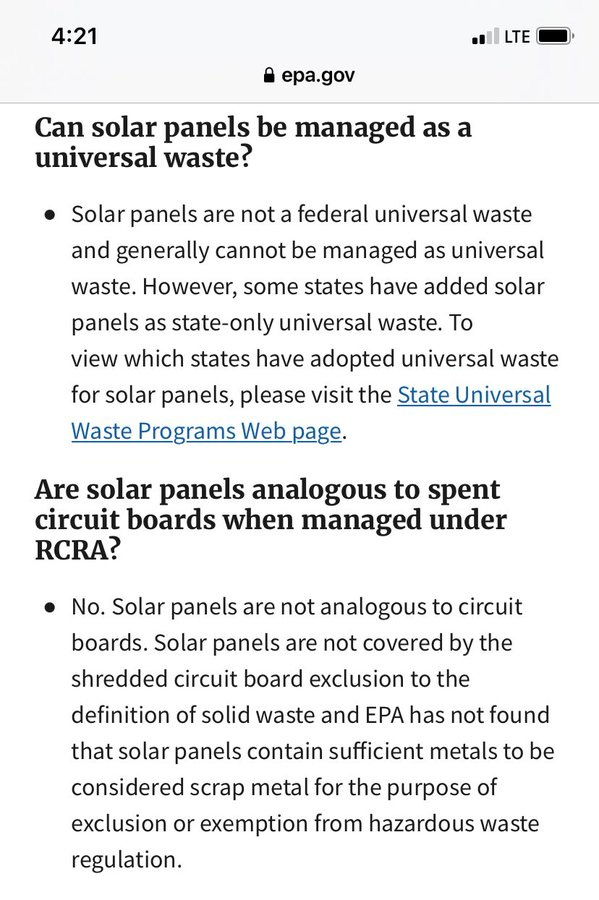
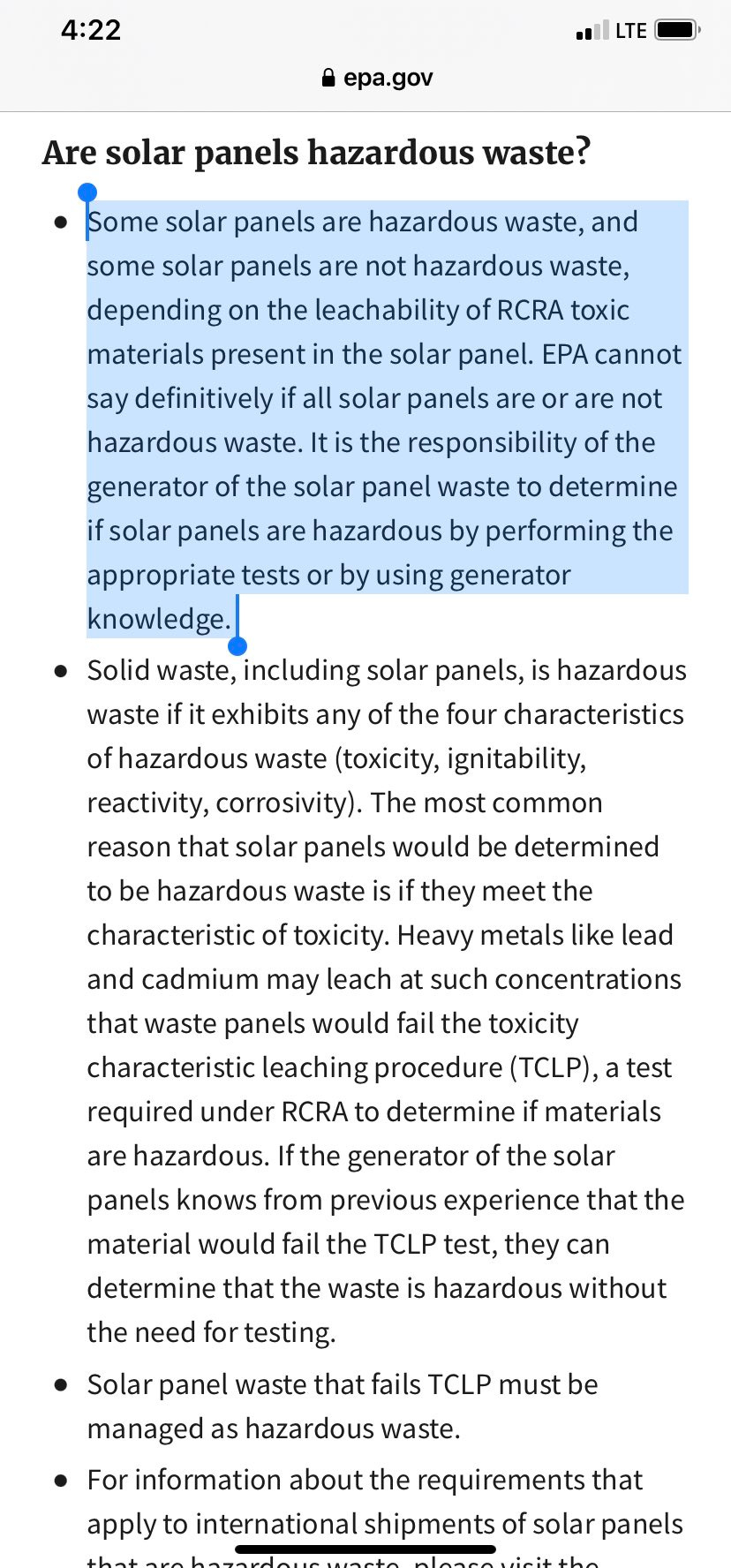
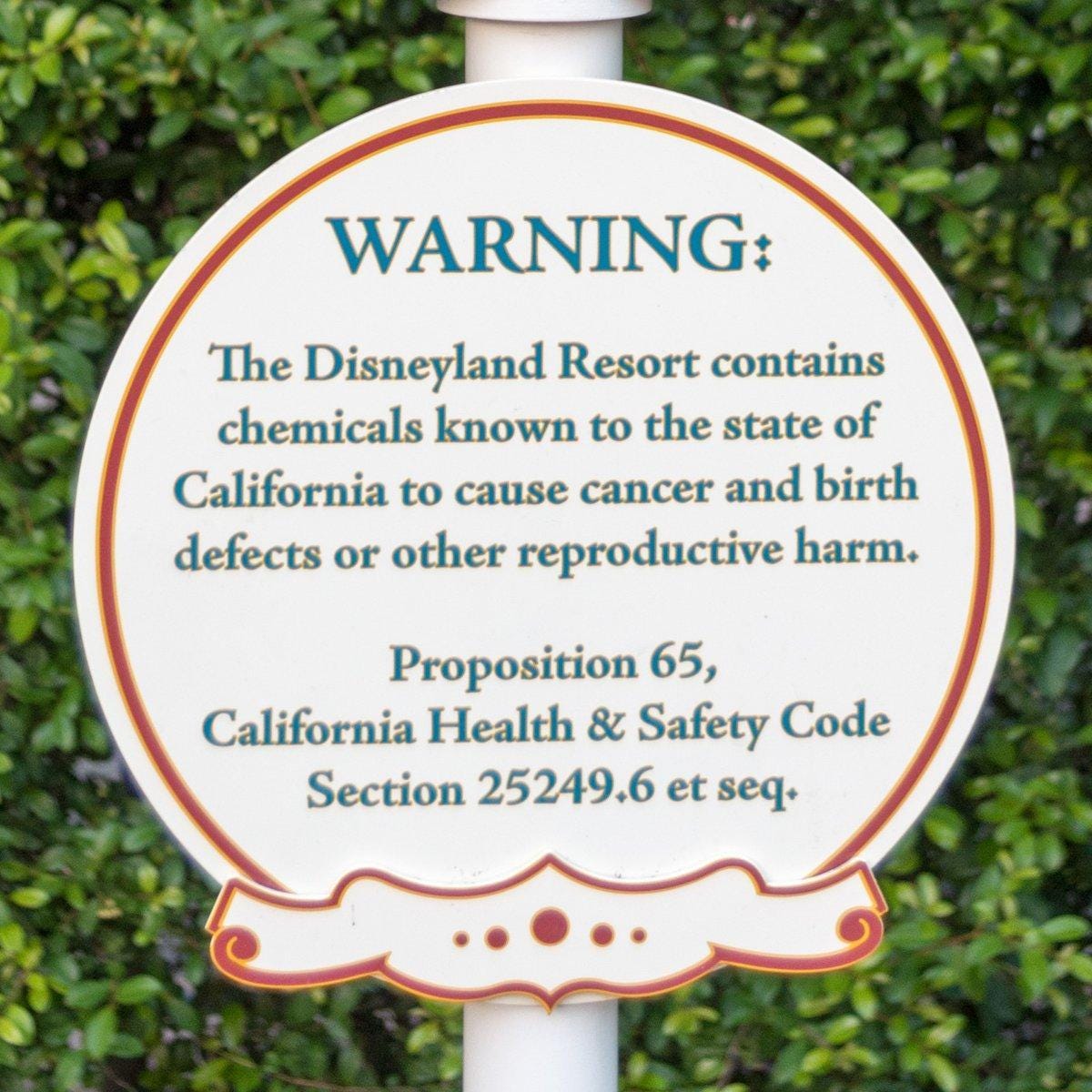
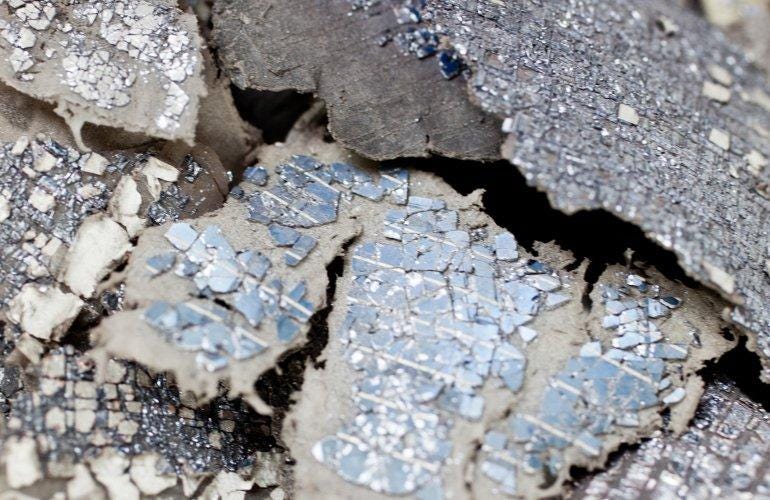
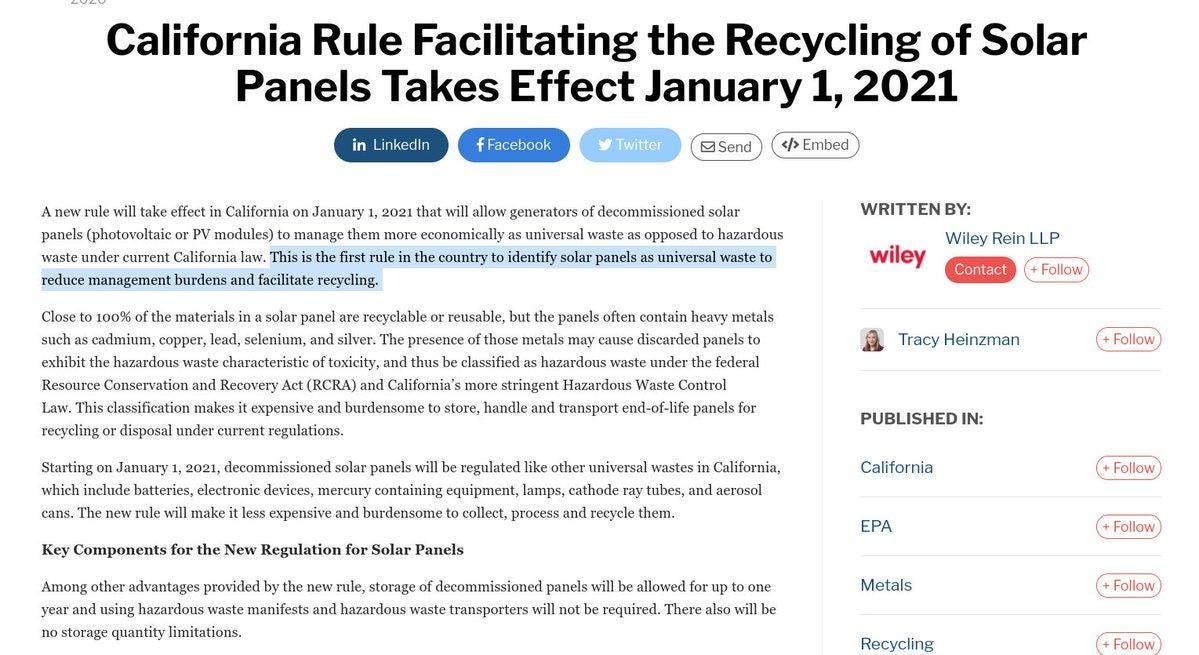

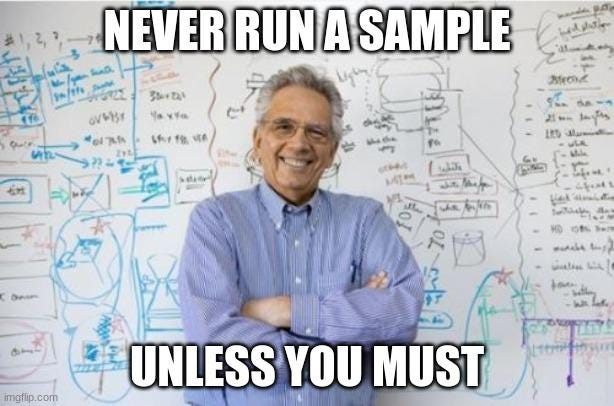
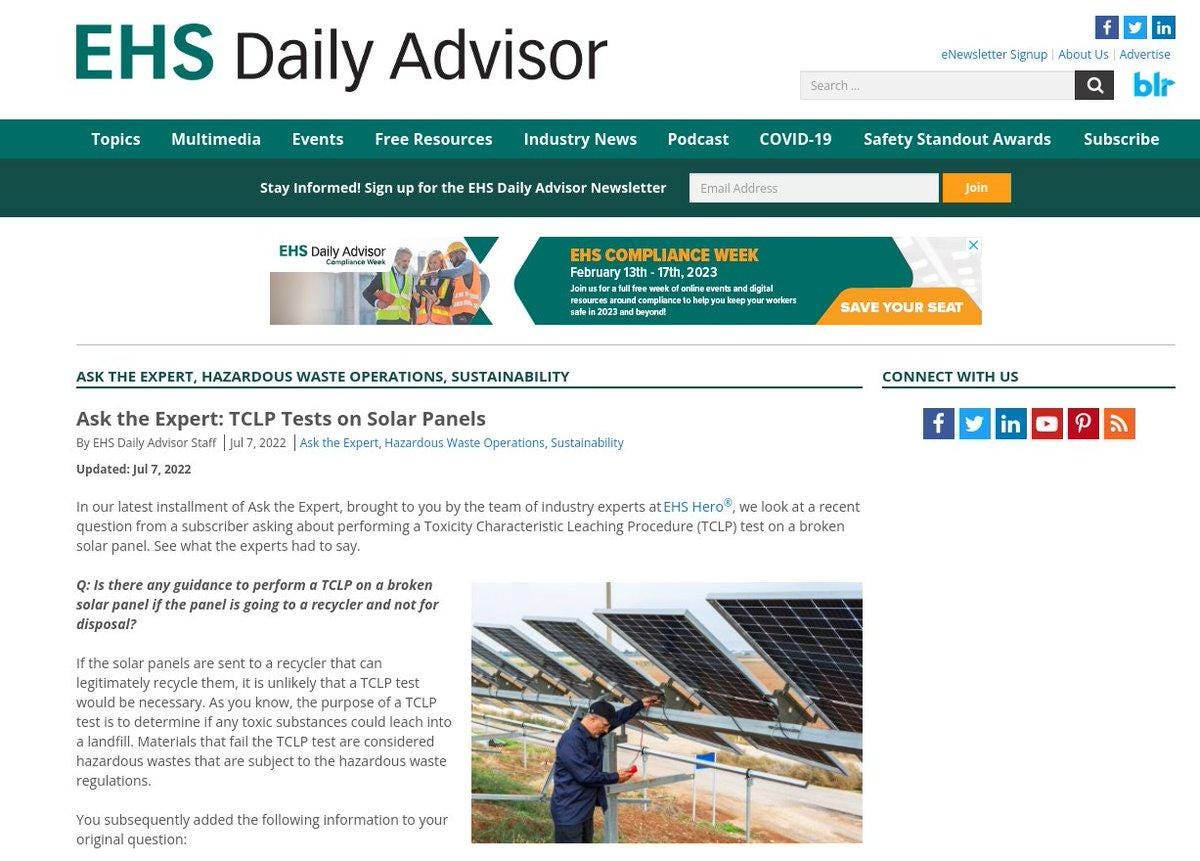

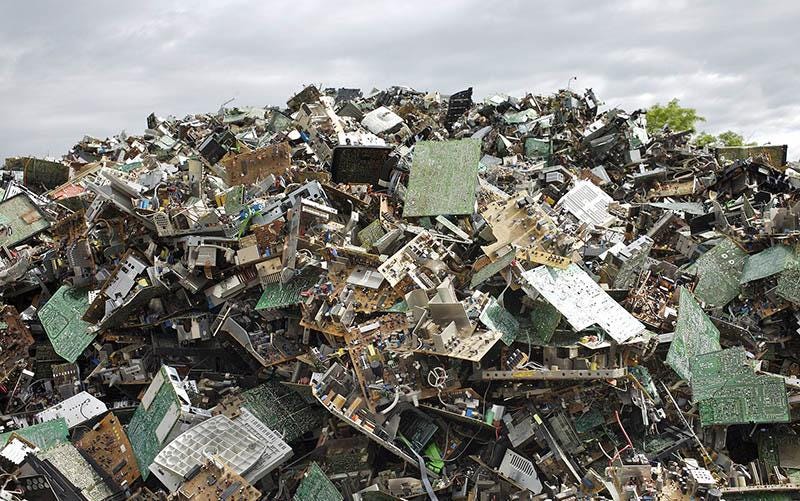
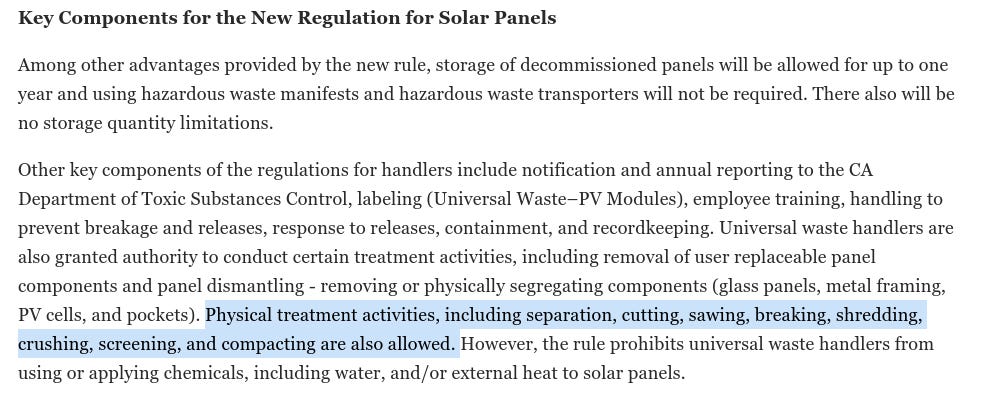
Imagine the worst thing you could do with fairly stable but potentially toxic material? Grind it up. Make it into a product! Truly unbelievable. CERCLA here we come!
I will note that most of the use involves shredding or grinding. Just as in mining, this is what you do to maximize the exposure of the material to leaching liquids. That process inevitably creates heat and dust in the material as well.